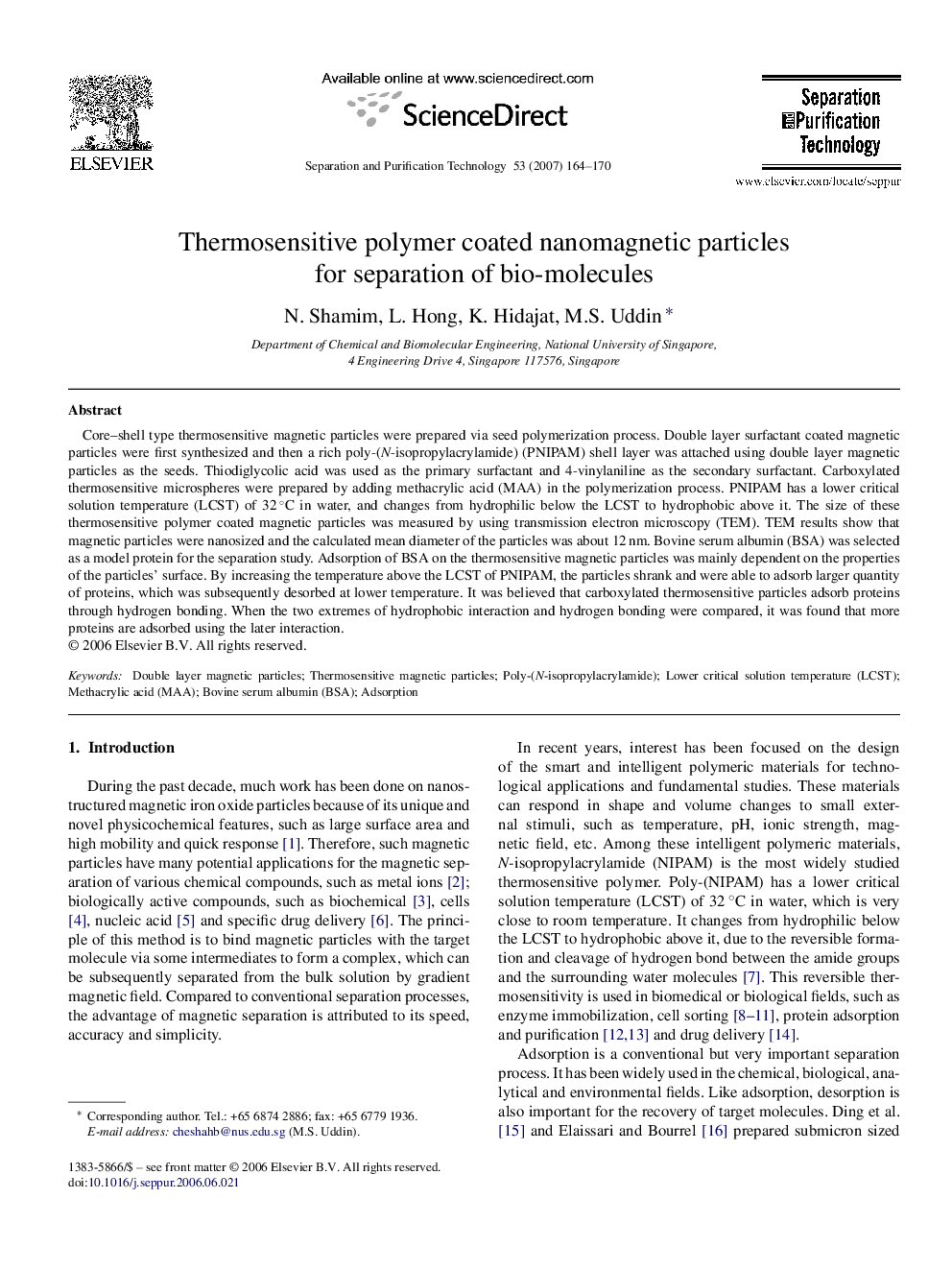| Article ID | Journal | Published Year | Pages | File Type |
|---|---|---|---|---|
| 643434 | Separation and Purification Technology | 2007 | 7 Pages |
Core–shell type thermosensitive magnetic particles were prepared via seed polymerization process. Double layer surfactant coated magnetic particles were first synthesized and then a rich poly-(N-isopropylacrylamide) (PNIPAM) shell layer was attached using double layer magnetic particles as the seeds. Thiodiglycolic acid was used as the primary surfactant and 4-vinylaniline as the secondary surfactant. Carboxylated thermosensitive microspheres were prepared by adding methacrylic acid (MAA) in the polymerization process. PNIPAM has a lower critical solution temperature (LCST) of 32 °C in water, and changes from hydrophilic below the LCST to hydrophobic above it. The size of these thermosensitive polymer coated magnetic particles was measured by using transmission electron microscopy (TEM). TEM results show that magnetic particles were nanosized and the calculated mean diameter of the particles was about 12 nm. Bovine serum albumin (BSA) was selected as a model protein for the separation study. Adsorption of BSA on the thermosensitive magnetic particles was mainly dependent on the properties of the particles’ surface. By increasing the temperature above the LCST of PNIPAM, the particles shrank and were able to adsorb larger quantity of proteins, which was subsequently desorbed at lower temperature. It was believed that carboxylated thermosensitive particles adsorb proteins through hydrogen bonding. When the two extremes of hydrophobic interaction and hydrogen bonding were compared, it was found that more proteins are adsorbed using the later interaction.
